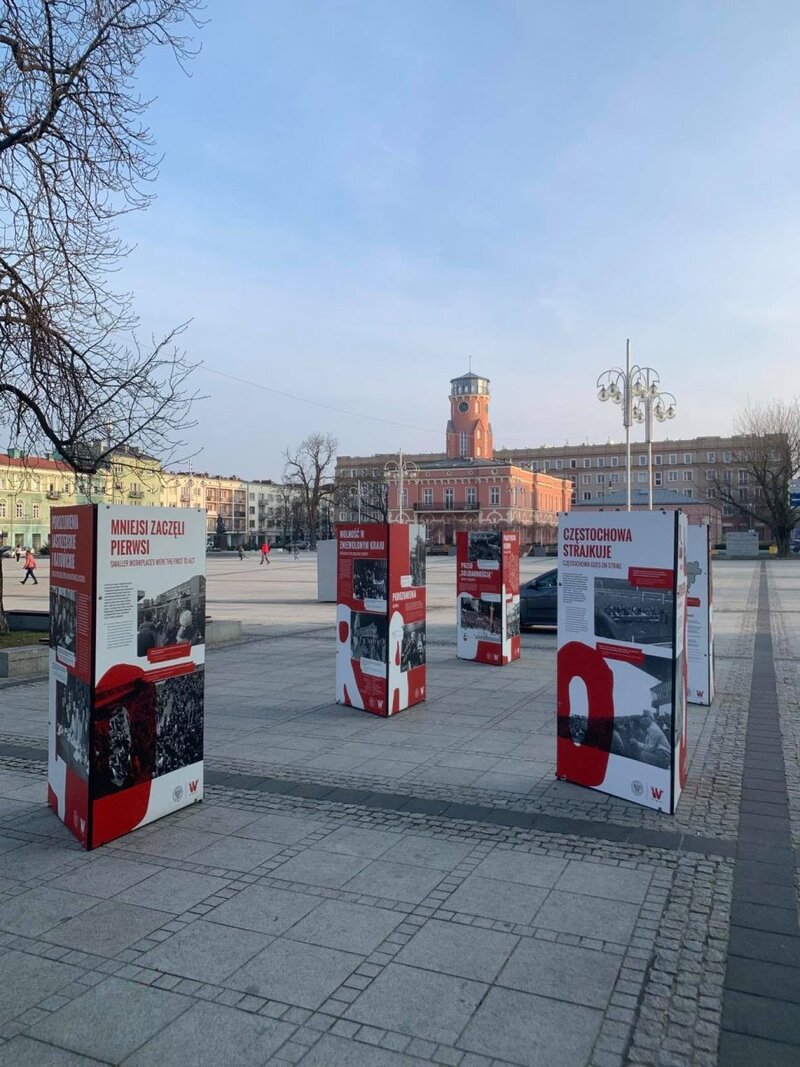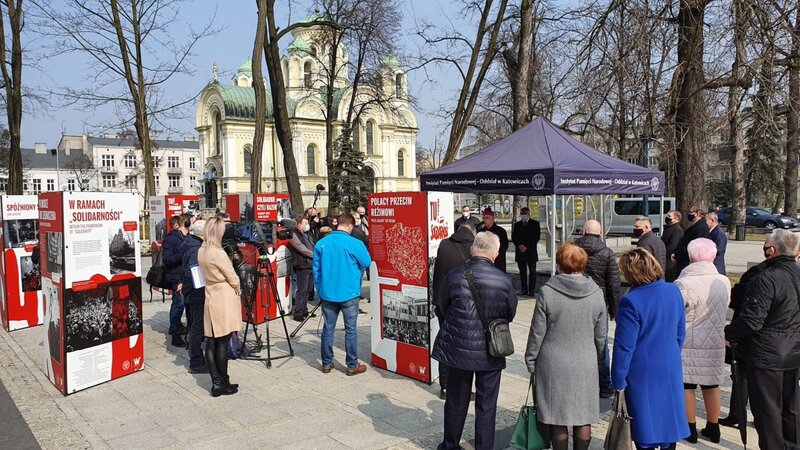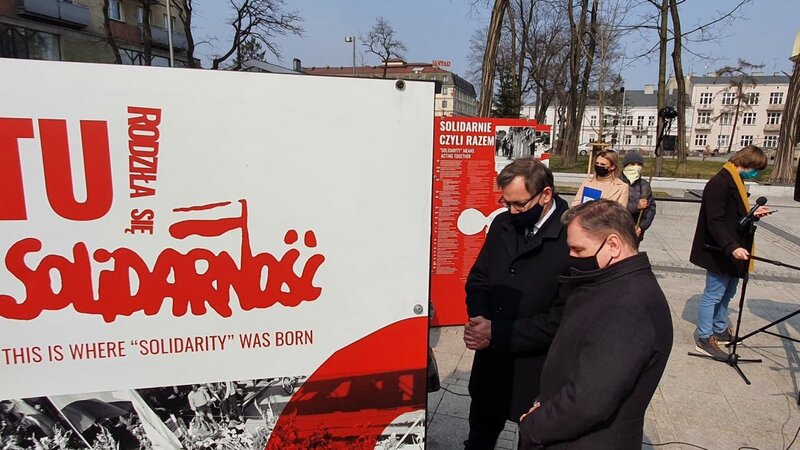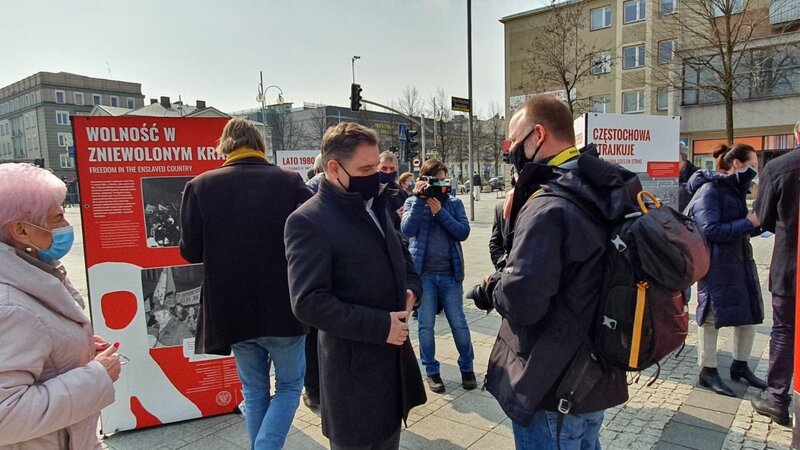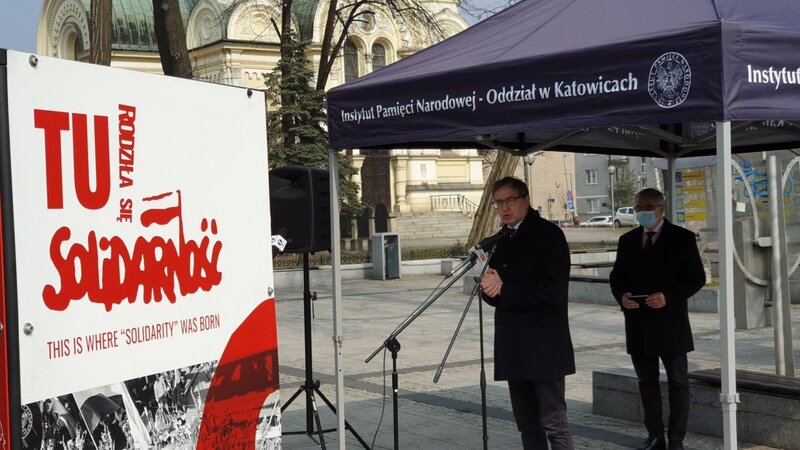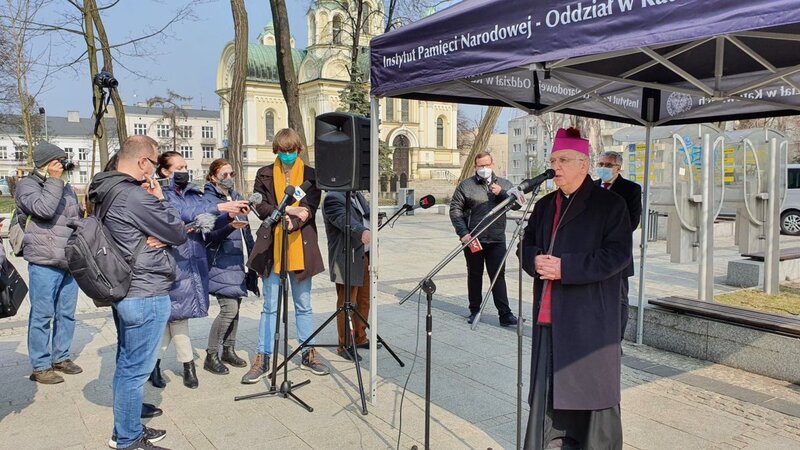As part of the official opening of the "This is Where ‘Solidarity’ was Born" exhibition, a briefing with the participation of: Jarosław Szarek Ph.D., the President of the Institute of National Remembrance, Piotr Duda, the Chairman of "Solidarity", Andrzej Sznajder Ph.D., the Director of the Katowice Branch of the IPN, and Adrian Rams, the author of the exhibition – is taking place on Friday, 26 March 2021 on Władysław Biegański Square in Częstochowa.
This is one of 16 exhibitions in this series, to be opened that day by the IPN’s Branches throughout Poland. The event is taking place on the eve of the 40th anniversary of the 4-hour warning strike of 27 March 1981, in which several million workers took part. It was at this time of the so-called "Bydgoszcz crisis" that the support for “Solidarity” was at its peak. The briefing will be held in accordance with the rules of the sanitary regime.
The exhibition will be on display until 21 April 2021.
On 1 July 2020, exactly on the anniversary of the beginning of the famous strikes, commonly known as the "August" strikes, the Institute of National Remembrance inaugurated the celebrations associated with the 40th anniversary of the founding of "Solidarity". On this occasion, the IPN opened the first in a series of "This is Where ‘Solidarity’ was Born" exhibitions, which serve as a source of information on the emergence of this movement not only in big cities, but also in small towns.
So far, the exhibition has been presented in 52 locations throughout Poland. On the anniversary of the signing of the Gdańsk Accords, exhibitions from all over Poland were displayed together on Marshal Józef Piłsudski Square in Warsaw.
The exhibition, presented on 26 March in Częstochowa, will be one of the next 16 exhibitions of this series. The last part of the "This is Where ‘Solidarity’ was Born" series will take place in other locations in mid-April.
For more information on the entire series of exhibitions, please contact Sergiusz Kazimierczuk, 22 581-86-74, e-mail sergiusz. kazimierczuk@ipn.gov.pl
The opening of the exhibition in Częstochowa: Monika Kobylańska Phone: 667 677 466, monika.kobylanska@ipn.gov.pl.
More:
https://ipn.gov.pl/en/news/4296,I-was-born-in-Poland.html?sid=2b9487bf272efe278f8ddda0d8b911b0
Historical context
Poland
In August 1980, on the outskirts of the communist Soviet empire, a great, peaceful movement was born. It was soon joined by almost one in three Poles! With its 10 million formal members, “Solidarity” became the largest trade union in the world.
"Solidarity" was the result of dreams, suffering and actions of Poles, starting from the Accursed Soldiers, through the youth underground of 1949-56, to participants of the "Polish months" of June '56, Millenium '66, March '68, December '70, and June '76. The activity of the Church, under the leadership of Primate Stefan Wyszyński, also greatly contributed to the establishment of "Solidarity". It also resulted in the pontificate of John Paul II and his first pilgrimage to Poland in 1979.
In 1980, Polish "Solidarity" gave rise to the collapse of the Soviet empire and satellite communist states on four continents. The world shaped by the Cold War after 1945 was rebuilt. The effect was the liberation of many countries, such as Lithuania, Latvia and Estonia to Georgia, from the Soviet influence or occupation. Thanks to the breakthrough initiated by “Solidarity”, it was also possible to unite Germany. Polish "Solidarity" symbolizes the triumph of peaceful spiritual strength over the materialistic communist empire of evil.
Częstochowa
Częstochowa was the largest industrial center in the region as well as an academic and religious center. Jasna Góra - as the spiritual capital of Poland - became the area of confrontation between the authorities of the Polish People's Republic and the Catholic Church. Until the summer of 1980, there were no anti-communist structures in Częstochowa, and individual persons maintained contacts with KOR, ROPCiO and WZZ. The only organized, independent community was the Academic Chaplaincy, operating under the direction of Fr. Ireneusz Skubiś.
On 29 August workers of the Bierut Steelworks in Częstochowa supported the strikers on the Polish Coast. The first strike in Częstochowa broke out on 1 September in the Municipal Transport Company. The strikers demanded an increase in wages and the establishment of Independent Self-Governing Trade Unions. In the next two days, workers from the "Polgal", "Transbud", "Instal" and PKS Częstochowa plants went on strike, and began to form founding committees of independent trade unions. On 28 September the Regional Founding Committee of ‘Solidarity" was established.
The strike readiness, announced by “Solidarity", caused by the union registration crisis, also covered the Częstochowa region and met with attempts to stop the strike action in factories at work on the order of the voivode. On 11 November 1980, a meeting of the “Solidarity” Regional Coordination Commission was held at the MPK "Ikar" factory club, at which explanations were demanded from him. As there was no reaction, the assembled decided not to leave the meeting and demanded that the government commission should come. The protesters reached an agreement with the government commission on 19 November. As a result of the protest, the newly established structures of the union solidified and consolidated, and the provincial and municipal authorities were dismissed.
